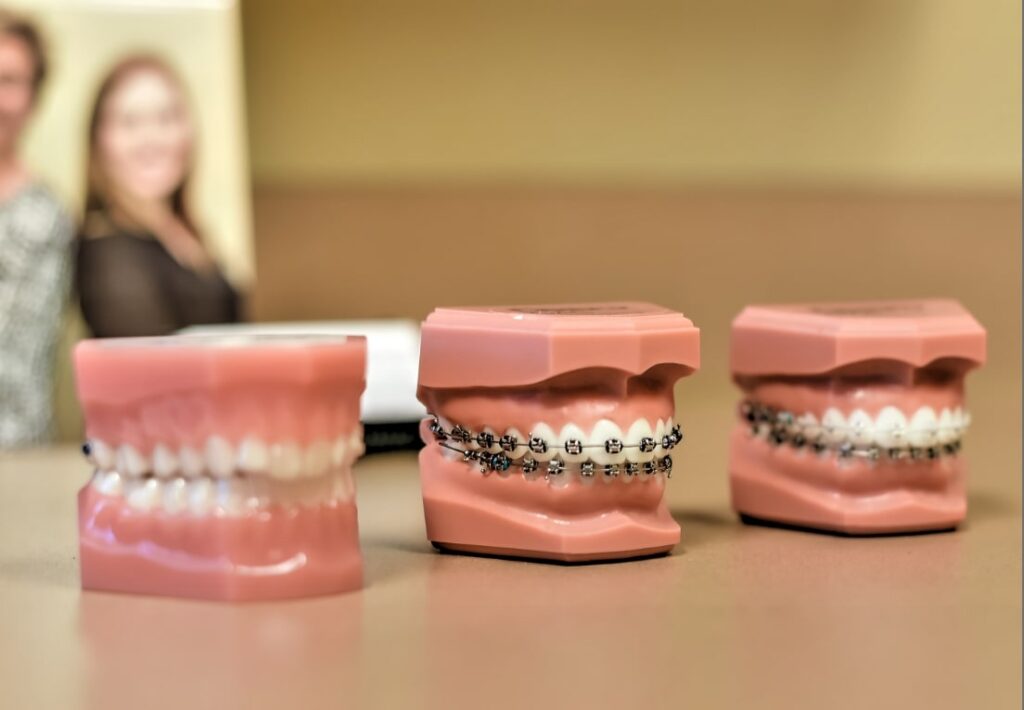Why Cumming Invisalign is the Perfect Selection for a Discreet Orthodontic Service
Why Cumming Invisalign is the Perfect Selection for a Discreet Orthodontic Service
Blog Article
Comprehensive Overview to Orthodontics Treatments for Dealing With Oral Misalignments
Comprehending the ins and outs of each treatment, including their systems, benefits, and potential disadvantages, is essential in making informed decisions about one's orthodontic therapy. As we navigate with the detailed overview to orthodontic procedures for fixing dental misalignments, the complex details of each method will certainly unfold, dropping light on the path towards a practical and harmonious dental placement.
Orthodontic Procedures Overview

Along with clear aligners and conventional dental braces, orthodontists might likewise suggest various other treatments like headwear, palatal expanders, or retainers to address particular placement issues (aligners). These treatments are tailored to each individual's unique needs and might involve a combination of treatments to accomplish the desired results. Routine modifications and monitoring are essential components of orthodontic therapy to ensure development gets on track and to make any type of necessary adjustments along the road. By going through orthodontic treatments, patients can not only achieve a straighter grin yet additionally improve their total dental health and feature.
Typical Dental Braces: Just How They Function
When thinking about orthodontic treatments for oral misalignments, typical dental braces attract attention as a reliable approach for remedying teeth placing. Typical dental braces are composed of braces, cables, and bands that collaborate to use continual stress on the teeth, gradually moving them into the wanted alignment. The brackets are connected to the teeth using an unique adhesive, and the cords are threaded through the brackets. By changing the stress of the cords, orthodontists can manage the instructions and force related to each tooth, guiding them into correct placement with time.
As stress is used to the teeth through the braces, the bone bordering the teeth is improved to sustain the new tooth positions. Clients will certainly need normal changes at the orthodontist's workplace to ensure the dental braces continue to use the appropriate stress for efficient teeth motion.
Unseen Aligners: Cons and pros
Undetectable aligners use a discreet and practical alternative to conventional braces for dealing with dental misalignments. These clear, tailor-made trays are virtually unnoticeable when worn, making them an attractive choice for people seeking an extra cosmetically pleasing orthodontic therapy. One of the key advantages of unnoticeable aligners is their visit the website removability, enabling easier upkeep of oral health contrasted to typical braces. People can eliminate the aligners prior to eating or brushing their teeth, minimizing the danger of food obtaining stuck in the device and simplifying the cleansing procedure.

Surgical Orthodontic Options
Surgical interventions in orthodontics present sensible options for dealing with intricate oral misalignments that may not be successfully settled through conventional orthodontic therapies. While typical braces and unnoticeable aligners can deal with several orthodontic issues, certain cases require surgical intervention to accomplish ideal results. Surgical orthodontic choices are normally recommended for severe malocclusions, significant jaw discrepancies, and cases where the underlying bone structure requires alteration to attain correct placement.
One typical surgical orthodontic treatment is orthognathic surgical treatment, which includes repositioning the jaws to fix useful concerns such as trouble chewing or talking. This surgical procedure is often performed in collaboration with an orthodontist that helps align the teeth prior to and after the treatment. Surgical orthodontics may also entail treatments to expose influenced teeth, get rid of excess periodontal tissue, or improve the jawbone to produce a more unified face profile.
Before considering medical orthodontic choices, patients undertake a detailed examination to identify the necessity and potential advantages of such treatments. cumming invisalign. While surgical treatment may appear complicated, it can considerably improve both the function and appearances of the smile in instances where traditional orthodontic therapies fall short
Retainers and Post-Treatment Care

Failing to comply with post-treatment care instructions can result in relapse, where the teeth slowly relocate back in the direction of their initial placements. Regular retainer wear, excellent oral health, and routine dental examinations are crucial for keeping the outcomes attained via orthodontic surgical be a dentist procedure and ensuring the long-term stability of the remedied dental positioning.
Final Thought
In verdict, orthodontic procedures provide numerous choices for fixing dental imbalances. Surgical orthodontic options are readily available for a lot more severe imbalances. Generally, orthodontic procedures can properly enhance oral health and wellness and aesthetic look.
As we navigate with the extensive overview to orthodontic procedures for dealing with dental imbalances, the elaborate information of each technique will unravel, dropping light on the course toward a harmonious and practical oral alignment. - orthodontics
One of the most usual orthodontic treatments is the use of dental braces, which consist of steel braces Continued and wires that use mild pressure to progressively move teeth right into the desired setting.When considering orthodontic treatments for oral imbalances, typical braces stand out as a reliable approach for fixing teeth placing. In addition, invisible aligners may not be appropriate for intricate orthodontic concerns that require more considerable teeth activity, as they are typically suggested for moderate to modest instances. Retainers are custom-made orthodontic tools created to hold teeth in their remedied settings after the conclusion of orthodontic treatment.
Report this page